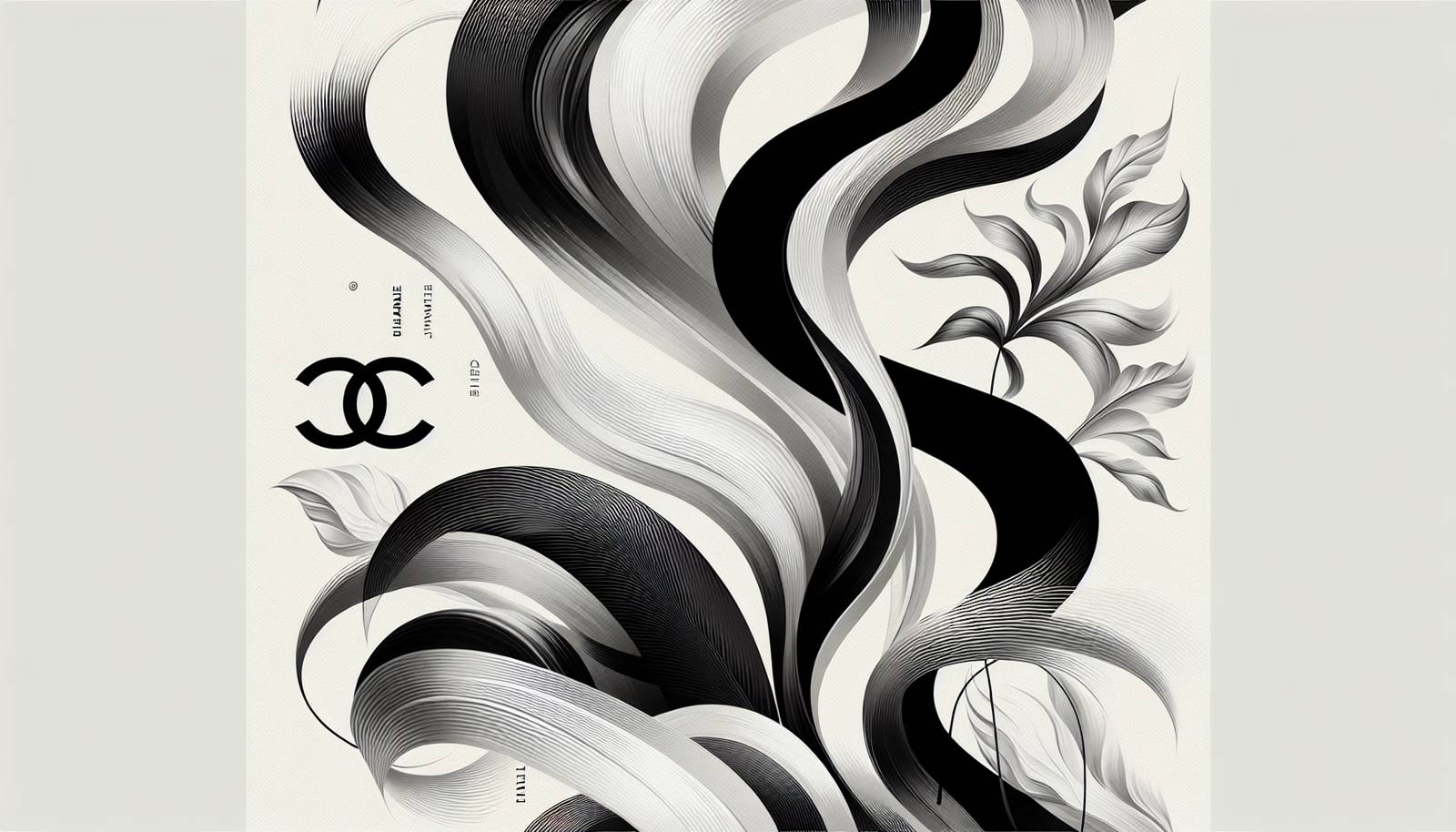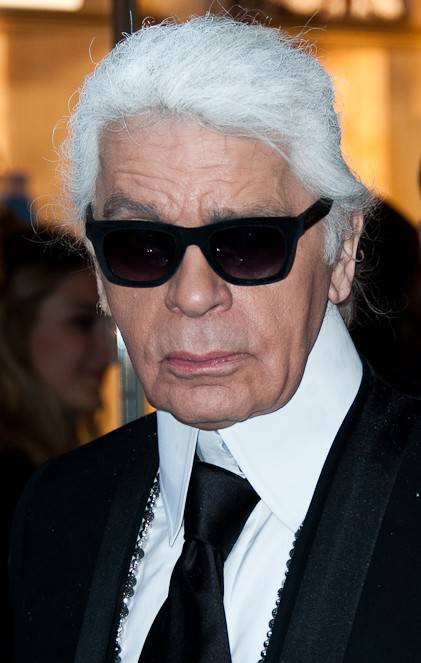
FAQ About Karl Lagerfeld

Who was Karl Lagerfeld?
Karl Lagerfeld was a German fashion designer, artist, and photographer best known for his work with the fashion house Chanel. Born on September 10, 1933, in Hamburg, Germany, Lagerfeld became one of the most prolific and influential figures in the fashion industry. Throughout his career, he worked with various luxury brands, including Fendi and his own label. Lagerfeld was celebrated for his innovative approach to fashion and his ability to blend classic styles with modern trends.

What contributions did Karl Lagerfeld make to Chanel?
Karl Lagerfeld joined Chanel in 1983 as the creative director and played a pivotal role in revitalizing the brand. He was instrumental in transforming Chanel from a historically rich yet stagnating fashion house into a contemporary and influential global powerhouse. Lagerfeld reinterpreted the iconic Chanel pieces, such as the tweed jacket and the little black dress, in fresh and exciting ways that resonated with modern audiences while staying true to Coco Chanel's original vision.

What is Karl Lagerfeld known for in terms of design aesthetic?
Karl Lagerfeld's design aesthetic is characterized by a blend of sophistication, modernity, and playfulness. He was known for modernizing classic designs and consistently pushing the boundaries of fashion while honoring the heritage of the brands he worked with. Lagerfeld often used bold colors, innovative textures, and elegant lines, creating looks that were both timeless and avant-garde. His flair for dramatic runway shows also set a new standard for fashion presentations.

How did Karl Lagerfeld's work influence modern fashion?
Karl Lagerfeld's influence on modern fashion is profound. His ability to continuously reinvent iconic pieces has inspired designers to blend tradition with innovation. Lagerfeld helped popularize the idea of collaborations between high fashion and mass-market brands, pioneering what is now a common practice. Moreover, his innovative approach to fashion shows as spectacular events set new industry standards. Lagerfeld's work continues to inspire fashion enthusiasts with a focus on maintaining brand heritage while embracing change.

What was unique about Karl Lagerfeld's fashion shows?
Karl Lagerfeld's fashion shows were renowned for their grandiosity and theatricality. He transformed the fashion show into a theatrical production, often setting his shows in elaborate, immersive environments such as Paris's Grand Palais, which he transformed into various imaginative settings including an iceberg, a supermarket, and a space station. This approach helped elevate the status of the runway show from a simple display of fashion to an artistic spectacle that captivated audiences worldwide.

What brands did Karl Lagerfeld work with aside from Chanel?
Aside from Chanel, Karl Lagerfeld worked with numerous other prestigious brands throughout his career. He was the creative director for Fendi for over five decades, where he left a significant mark on the brand with his luxurious, chic designs. Lagerfeld also launched his own eponymous brand, Karl Lagerfeld, which is known for its accessible luxury and chic, rock-influenced style. His work with various brands showcased his versatility and deep understanding of fashion.

When did Karl Lagerfeld pass away?
Karl Lagerfeld passed away on February 19, 2019, in Paris, France. His death marked the end of an era in the fashion industry where he was widely regarded as one of its most innovative and influential figures. Lagerfeld's legacy continues to inspire designers and fashion enthusiasts around the world.

What was Karl Lagerfeld's personal style?
Karl Lagerfeld was well-known for his distinctive personal style, which included his signature white hair, black sunglasses, high-collared white shirts, fingerless gloves, and tailored black suits. His iconic look was a reflection of his meticulous attention to detail and love for classic yet bold fashion statements. Lagerfeld's personal style became an integral part of his brand and persona, making him easily recognizable and a style icon in his own right.

Did Karl Lagerfeld write any books or publications?
Karl Lagerfeld was also an accomplished author and photographer, publishing several books throughout his career. He wrote and illustrated books on fashion, art, and photography. Lagerfeld even collaborated on books that provided insights into his creative processes and personal philosophy. In addition, he was known for his wide-ranging intellectual pursuits, often sharing his thoughts and ideas through various publications.

How did Karl Lagerfeld innovate in the fashion industry?
Karl Lagerfeld was an innovator known for constantly pushing the boundaries of traditional fashion. He was among the first to bring the high fashion aesthetic into collaborations with mass-market brands, making high style more accessible and creating a new market dynamic. Lagerfeld also embraced digital media and technology in fashion presentations, contributing to the evolution of fashion shows into visual spectacles that integrated multimedia elements, thus expanding the experiential aspect of fashion.

What was Karl Lagerfeld's impact on Fendi?
Karl Lagerfeld's tenure at Fendi was one of the longest in fashion history, spanning more than five decades. He was instrumental in transforming the Italian luxury brand into a global powerhouse, renowned for its creativity and luxury craftsmanship. Lagerfeld introduced new techniques and innovative designs, particularly with fur, helping to redefine Fendi's image and appeal. His creative genius ensured Fendi remained at the forefront of fashion innovation.

How did Karl Lagerfeld become a key figure in fashion?
Karl Lagerfeld's rise to prominence in the fashion industry began in the 1950s after he moved to Paris and won a design competition. This victory led to opportunities with prestigious fashion houses like Balmain and Patou. His distinct vision and ability to consistently innovate catapulted him to leadership roles at major brands like Chanel and Fendi. Lagerfeld's keen eye for style, dedication, and work ethic solidified his status as a key figure in the fashion world.

What is the Karl Lagerfeld brand known for?
The Karl Lagerfeld brand is recognized for its blend of classic and contemporary style, embodying Lagerfeld's own fashion philosophy. The brand offers a wide range of products including clothing, accessories, and fragrances. It is known for its rock-chic aesthetic, often incorporating elements like bold prints and silhouettes, which reflect Lagerfeld's unique approach to design. The brand prides itself on delivering affordable luxury, making it accessible to a broader audience.

Did Karl Lagerfeld have any famous muses or collaborators?
Karl Lagerfeld was known for working with various muses and collaborators through his career, including notable personalities such as Claudia Schiffer, Cara Delevingne, and Lily-Rose Depp, who often appeared in his campaigns and shows. Lagerfeld's collaborations extended beyond fashion, working with artists, filmmakers, and musicians, which enriched his designs and creative process, leading to a blend of fashion and artistry in his work.

What are some quotes or sayings attributed to Karl Lagerfeld?
Karl Lagerfeld was known for his sharp wit and memorable quotes. One of his famous sayings is, "Fashion is a language that creates itself in clothes to interpret reality." Another signature remark is his take on personal style: "Luxury is the ease of a T-shirt in a very expensive dress." His quotes often reflect his views on fashion, style, and the industry at large, showcasing his unique perspective and personality.

How did Karl Lagerfeld view digital media in fashion?
Karl Lagerfeld embraced digital media as an essential component of modern fashion. He utilized social media platforms and digital technology to enhance the experience of fashion shows and expand brand reach, understanding its potential to engage younger audiences globally. Lagerfeld was innovative in integrating these elements, recognizing their role in shaping the future of fashion marketing and communication.

What was Karl Lagerfeld's approach to sustainability in fashion?
While Karl Lagerfeld was a pioneer in many aspects of fashion, his approach to sustainability was less emphasized compared to other contemporary designers. However, he often spoke about the importance of creativity and innovation in addressing fashion industry challenges, including sustainability. His work occasionally reflected these themes, though it was not the central focus of his career. Recent initiatives by the brands he worked for have incorporated more sustainable practices following his legacy.

How did Karl Lagerfeld balance tradition and modernity at Chanel?
Karl Lagerfeld expertly balanced tradition and modernity at Chanel by respecting the brand's rich heritage while introducing contemporary elements to appeal to new audiences. He achieved this through innovative reinterpretations of classic Chanel pieces, maintaining their timeless elegance while infusing modern trends and technology. His vision ensured Chanel stayed relevant and desirable, bridging generations and preserving its legacy as a leading fashion house.

What is Karl Lagerfeld's legacy in the fashion industry?
Karl Lagerfeld's legacy in the fashion industry is marked by his transformative influence, blending innovation with tradition. He revitalized iconic brands such as Chanel and Fendi, making them contemporary and culturally relevant. Lagerfeld's visionary work set new standards for fashion design, presentation, and marketing. His enduring legacy is seen in his contributions to the aesthetic and business aspects of fashion, inspiring future generations of designers.

How did Karl Lagerfeld's background influence his career?
Karl Lagerfeld's background played a significant role in shaping his career. Growing up in Germany, he was exposed to various cultural and artistic influences from a young age, fostering a deep appreciation for art, design, and innovation. His move to Paris marked the beginning of his career in fashion, where he honed his skills and developed a unique style that combined classical elegance with modern innovation. His multicultural experiences enriched his perspective, allowing him to connect with diverse audiences worldwide.
